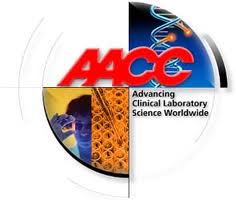WASHINGTON | January 21, 2013

New research shows that a handheld mobile device can check patients’ HIV status with just a finger prick, and synchronize the results in real time with electronic health records.
The research, appearing online Jan 18. in Clinical Chemistry, the journal of American Association for Clinical Chemistry, says the new handheld technology takes a step toward providing remote areas of the world with diagnostic services traditionally available only in centralized healthcare settings.
According to an AACC press release, of the 34 million people infected with HIV worldwide, 68 percent of them live in sub-Saharan Africa, with south and southeast Asia bearing the second greatest burden of disease.
Many HIV-infected people in these regions are unable to get tested or treated because they can’t easily travel to centralized healthcare centers. This creates an extreme economic burden on already-poor nations, with the epidemic estimated to cause a 1.5 percent annual loss in gross domestic product each year for the worst-affected countries, AACC researchers say.
It has also created 16.6 million AIDS orphans – children who have lost one or both parents to the disease. A low-cost mobile device that performs HIV testing could help combat these trends, and the overall global epidemic, by enabling the diagnosis and treatment of HIV-infected people in resource-limited settings, the researchers say.
In the study, a team including Curtis D. Chin and Yuk Kee Cheung designed a device that captures all the essential functions of enzyme-linked immunosorbent assays, the most commonly used laboratory diagnostic for HIV. The authors show that the device performs laboratory-quality HIV testing in 15 minutes using finger-pricked whole blood.
The device also detects weakly positive samples, and uses cellphone and satellite networks to automatically synchronize test results with patient health records from anywhere in the world. Because of this real-time data upload, this mobile device will allow policymakers and epidemiologists to monitor disease prevalence across geographical regions quickly and effectively. This could improve effectiveness in allocating medications to different communities, and patient care in general, the researchers say.
“This is a perfect example of how ingenuity and good science can effectively address a real and serious medical problem,” says Nader Rifai, editor in chief of Clinical Chemistry.

